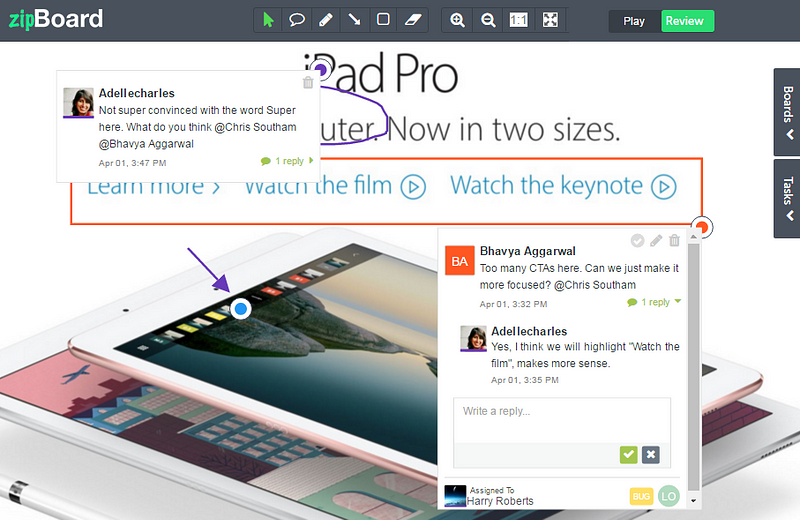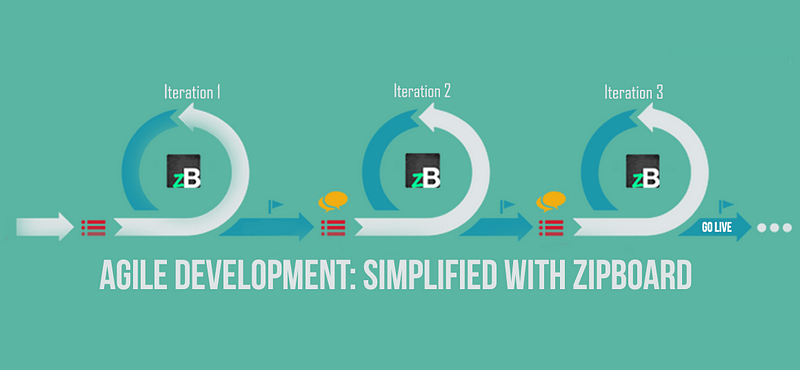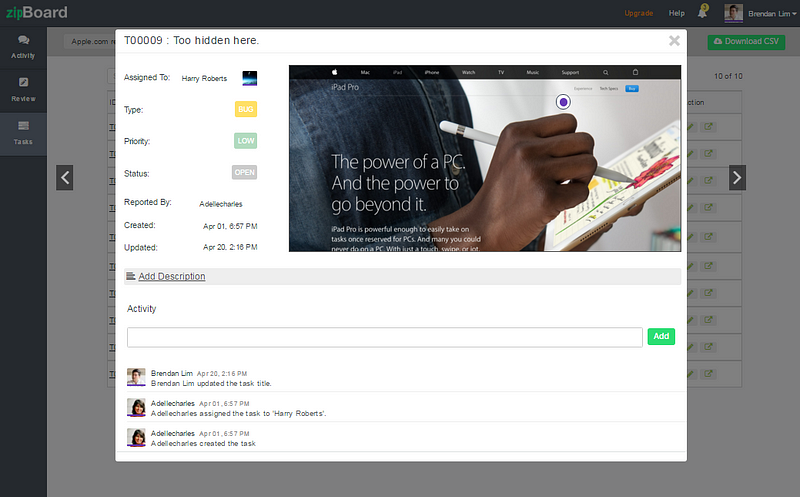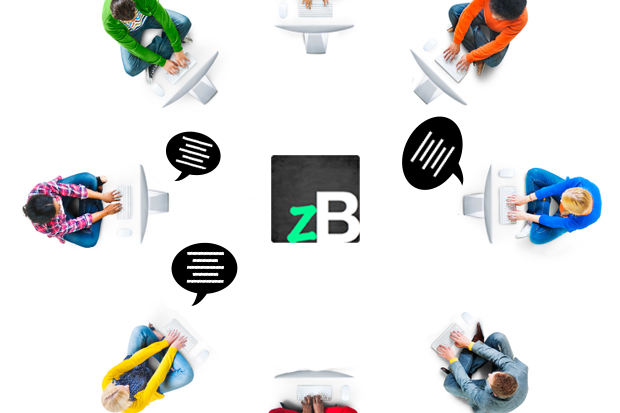SUBSCRIBE TO MY CHANNEL
Five Test Automation Mistakes to Avoid - Must watch for testers!
How to be successful QA leader? - Future leaders, QA Leads and Managers
LATEST THINKING
Monday, October 10, 2016
Sunday, August 21, 2016
Free Selenium WebDriver Training Online on Buddhatree
Selenium Live Training: - This training will make you job ready to take up any assignment in test automation and equips you with essential Selenium skills. It will give you the much needed framework creation experience using Selenium, Java, TestNG, Log4J, Jenkins, Maven via implementation of real life industry projects.
Check the below link for more details on Selenium Training Syllabus:- Selenium Training Syllabus
Check the below link for more details on Selenium Training Syllabus:- Selenium Training Syllabus
Check the below link for to join Selenium Online Training Class : - Selenium WebDriver Training
Highlights of the course
Anytime & Anywhere Access
You can attend the Selenium training sessions from any part of the world. You don't have to leave your home and commute to learning centers. All you need to have is a PC with good internet connection and audio/sound system. You can attend training session as per your convenient time.
Q&A Forum
Buddhatree run their own dedicated Question and Answer FORUM and try to answer every question. The Buddha Tree student’s questions will always answered on priority.
Latest Frameworks
Buddhatree provides training on creating test automation framework using Selenium, Grid, Java, TestNG, log4j, Apache POI, Apache Maven etc.
Code Sharing
Students will be provided working code & automation exercises at the end of every session.
We Cover Everything
· 300 page theoretical concept which describes each concept of with syntax & example
· 4000 line of working example
· 30 hours of Video tutorial
· Interview Questions & Answers
Contact Buddha tree for more details
- Send email to buddhatree1@gmail.com
To Students -
As of now Inaugural Offer is going on, get enrolment of trial course in free. Drop a text to buddhatree1@gmail.com
Sunday, August 14, 2016
ISTQB TEST MENTOR. FREE ANDROID APP FOR ISTQB FOUNDATION LEVEL ASPIRANTS!
EXERCISE YOUR MIND WITH OUR NOTORIOUSLY HARD TESTS AND BOOST YOUR PERFORMANCE IN REAL EXAM.
ISTQB TEST MENTOR is a free app which is a must for every ISTQB® foundation level aspirant.
Features
◆Chapter wise test◆
Access to well designed chapter wise questions to test your understanding of every chapter. We have hand picked quality question per chapter so that you can start preparing as soon complete every chapter. No other app provides chapter wise Tests.
Access to well designed chapter wise questions to test your understanding of every chapter. We have hand picked quality question per chapter so that you can start preparing as soon complete every chapter. No other app provides chapter wise Tests.
◆Mock Exam◆
Test your knowledge of ISTQB® foundation level with our mock test. You have 1 hour to answer 40 questions and you need to answer 26 to clear (just like your real certification exam).The mock exam follows the exam structure as specified by ISTQB®
Test your knowledge of ISTQB® foundation level with our mock test. You have 1 hour to answer 40 questions and you need to answer 26 to clear (just like your real certification exam).The mock exam follows the exam structure as specified by ISTQB®
This helps you get used to the format of the questions and making sure you spend the right amount of time on each sectiom.
◆Glossary◆
The standard ISTQB® Glossary(ordered from A-Z) for your reference. The glossary has definitions of the extract of terms used in the Foundation Level syllabus 3.1. Search for any testing terms and definitions designed to aid communication in (software) testing and related disciplines.
The standard ISTQB® Glossary(ordered from A-Z) for your reference. The glossary has definitions of the extract of terms used in the Foundation Level syllabus 3.1. Search for any testing terms and definitions designed to aid communication in (software) testing and related disciplines.
◆Useful links◆
Links to helpful websites to skyrocket your performance in the certification exam.
Links to helpful websites to skyrocket your performance in the certification exam.
This app was developed with a genuine intention to help the ISTQB aspirants. 5 reasons you should download ISTQB test mentor right this second:
★The app has quality questions that are unique and are very challenging.
★Questions are handpicked from various sources to challenge your knowledge.
★These questions have helped hundreds of aspirants in the past.
★Share your results on social media and challenge your friends.
★Works Offline.
★Questions are handpicked from various sources to challenge your knowledge.
★These questions have helped hundreds of aspirants in the past.
★Share your results on social media and challenge your friends.
★Works Offline.
Email: kakoproduct@gmail.com
Facebook: www.facebook.com/groups/ISTQBtestmentor
Website: www.kakoapp.com
Monday, August 8, 2016
ISTQB: Easiest way to solve statement and branch coverage problems.
Several ISTQB aspirants face issues in answering the statement and branch coverage questions. These questions are really important to clear ISTQB certification.I got emails from several aspirants where they have asked me doubts on statements and branch coverage. So I decided to write this post.
Before learning how to solve these problem one needs to know the basics of drawing flow chart.
Flowcharts use special shapes to represent different types of actions or steps in a process. Lines and arrows show the sequence of the steps, and the relationships among them. These are known as flowchart symbols.
STATEMENT COVERAGE
You can say you have achieved 100% statement coverage if your test cases executes every statement in the code at-least once.
Let's solve a problem on statement coverage so that you know how to solve such question when asked in exam.
How many test case are required to achieve 100% statement coverage?
Switch PC on
Start "outlook"
IF outlook appears THEN
Send an email
Close outlook
Read P
Read Q
IF P+Q > 100 THEN
Print “Large”
ENDIF
If P > 50 THEN
Print “P Large”
ENDIF
Read P
Read Q
IF P+Q > 100 THEN
Print “Large”
ENDIF
If P > 50 THEN
Print “P Large”
ENDIF
As shown in the illustration above, 4 test cases are required for 100% path coverage.
1A-2B-E-4F
1A-2B-E-4G-5H
1A-2C-3D-E-4G-5H
1A-2C-3D-E-4F
How many test case are required to achieve 100% statement coverage?
Switch PC on
Start "outlook"
IF outlook appears THEN
Send an email
Close outlook
Tip: To achieve 100% statement coverage you need to execute all the statements (represented with rectangular boxes).You need to find out the shortest number of paths following which all the nodes will be covered.
As you seen in diagram below in one path we can cover all statements. So 1 test case is enough to achieve 100% statement coverage.
If you are flying with an economy ticket, there is a possibility that you may get upgraded to business class, especially if you hold a gold card in the airline's frequent flier program. If you don't hold a gold card, there is a possibility that you will get 'bumped' off the flight if it is full and you check in late. This is shown in Figure 4.5.
Note that each box (i.e. statement) has been numbered. Three tests have been run:
Test 1: Gold card holder who gets upgraded to business class
Test 2: Non-gold card holder who stays in economy
Test 3: A person who is bumped from the flight
What is the statement coverage of these three tests?
a. 60%
b. 70%
c. 80%
d. 90%
The answer is 80%. There are 10 statements(boxes) and 8 have been covered by the tests run.
BRANCH/DECISION COVERAGE:
Branch coverage is also known as Decision coverage. It covers both the true and false conditions unlike statement coverage. We can say we have achieved 100% decision coverage if all the edges in the flow charts are covered by your test case.
How many test case are required to achieve 100% decision coverage?
Switch PC on
Start "outlook"
IF outlook appears THEN
Send an email
Close outlook
We need 2 test cases to achieve 100% decision coverage. 2 paths will ensure covering of all the edges as shown is figure below:Switch PC on
Start "outlook"
IF outlook appears THEN
Send an email
Close outlook
How many test cases are required for 100% decision coverage?
Read Q
IF P+Q > 100 THEN
Print “Large”
ENDIF
If P > 50 THEN
Print “P Large”
ENDIF
With 2 paths we can cover all the edges. So 2 test cases are required for 100% decision coverage.
Tips
- Cover all nodes for 100% statement coverage.
- Cover all edges for 100% decision coverage.
You are often asked minimum number of test cases required to cover 100%statement and branch coverage in ISTQB exams.
PATH COVERAGE:
To achieve 100% path Coverage you need to cover all the paths from start to end. As far as I know you wont get questions to calculate path coverage in ISTQB certification exam.
How many test cases are required for 100% path coverage?
Read Q
IF P+Q > 100 THEN
Print “Large”
ENDIF
If P > 50 THEN
Print “P Large”
ENDIF
As shown in the illustration above, 4 test cases are required for 100% path coverage.
1A-2B-E-4F
1A-2B-E-4G-5H
1A-2C-3D-E-4G-5H
1A-2C-3D-E-4F
Remember
- Branch coverage and Decision coverages are one and the same
- 100% LCSAJ(Linear Code Sequence and Jump.) coverage implies 100% Branch/Decision coverage
- 100% Path coverage implies 100% Statement coverage
- 100% Branch/Decision coverage implies 100% Statement coverage
- 100% Path coverage implies 100% Branch/Decision coverage
I have tried to explain the statement and decision coverage with simple techniques. I hope it helps!
RECOMMENDED BOOK FOR ISTQB NEW SYLLABUS
Wednesday, June 22, 2016
Master API Test Automation in 10 Minutes!
Postman is a real time saver making it easier for developers to develop and test APIs. Postman drastically reduces the pressure of regression testing from the QA team. API automated tests are far less time consuming than UI automated tests. The major advantage of API automation is that we can access the application without a user interface. This provides an early evaluation of its overall build strength before running GUI tests.
By integrating the API automated tests to the build server, the QA team can provide a quick feedback on the health of the application as soon as it is deployed. This is achievable with Newman, a command-line collection runner for Postman. It allows you to easily run a Postman collection directly from the command-line, and integrate it with your continuous integration server.
The main reason I like Postman is because of its powerful automation capabilities. Moreover, the learning curve for using it is very low and the app provides a very clean and intuitive user interface to test your server requests. These tests will validate every single time if the response is correct. Writing tests in Postman is made easy by JavaScript and inbuilt snippets, allowing any inexperienced tester to write an efficient test.
Click on the link below to know more:
Thursday, June 2, 2016
6 Lessons from a 6-Month-Old QA Engineer
GUEST POST FROM URIDAH SAMI
It’s my 7th month as a Quality Assurance Engineer and I started this blog a couple of months ago. My first post was Diving into QA which was about how/why I started a career in Quality Assurance. For a few weeks now, I have been struggling to write another post but everything I come up with is disregarded (by me, of course!) because there are so many more experienced, much smarter and way better QA writers out there who have already covered what I want to talk about and maybe what I write wouldn’t stand out as I want it to. But recently, I just stumbled upon this idea that to keep things fresh and real, why not share my lessons from my short journey so far. So, here is a list of things that I have picked so far:
- Pre-requisite for a QA Engineer: Good Communication Skills
This is the first point because this is the most important skill, a tester or any professional for that matter, has to have.
“Communication is everyone’s panacea for everything.” – Tom Peters
No matter how good a tester you are, you are not going anywhere without good communication skills. Everything you do, you are going to have to utilize those communication skills if you want your work to matter, whether you are writing a bug report or just discussing an improvement with your developer.
- Developers and QA Engineers are not rivals
Commonly, we are led to believe that developers/software engineers and testers/QA engineers are rivals. To be honest, it sounds natural and right because one makes and the other breaks. But that is NOT true. It’s one of those tricky cases where you think one thing is right but actually the opposite of it is right. Although, it also depends on the way work is done in an organization.
In Agile environment, developers and testers work together closely to create a better quality product. Both of them are involved throughout the SDLC and can cooperate better to ensure that their time and energy is spent towards the betterment of the product or the solution being built.
- The more detail-oriented you are, the better it is
In my opinion, it is very beneficial if a QA Engineer is detail oriented. I wouldn’t call it a must-have skill, but it definitely improves the work a lot. It all basically boils down to how in-depth your exploratory testing is. Detailed exploratory testing results in better knowledge of the system for the QA Engineer and when you have more knowledge, you can automatically test better since you know how different features are linked, what are the different ways in which a functionality works and hitting where might lead you to a potential bug and what its cause might be.
- Spending more time pays off later
Here comes our famous “Time is Money” quote. And consider it as an investment instead of saving, here. I believe you have to invest time to do good testing. The more time you invest, the more probability of a better output you have. Just to clarify, this doesn’t mean running time-consuming test cases. It means spending time on exploring the system and testing as many features as you can and ensuring maximum coverage.
- Making the choice between Manual or Automated testing
Learning to make the right choice between manual or automated testing is the key to efficient testing. I am using the word efficient here because your testing should be good and quick (in comparison). Some test cases would take less time if you automate them, especially the ones you know are going to run again and again for regression or smoke testing. Then, there are some test cases which SHOULD NOT be automated. There is no replacement for an actual human being and that is why we NEED manual testing. It is better if you manually test critical functionalities and observe how things work. Moreover, there are some tests that just become more time consuming if they are automated.
- Testing is a skill
It’s a general misconception that testing needs mere common sense and anybody can do it. Testing is a proper skill which can be learned and polished. I’d like to quote one of James Bach’s amazing metaphors here:
“It’s like somebody trying to fly a helicopter saying “I keep crashing it and I don’t understand.“ “Have you taken any Helicopter:How to fly classes?” “Well, No! But you know it should be just common sense” “
Similarly, testing is not that easy. You have to understand different types of testing, you have to develop an understanding of the system or solution, you are testing and then you might also have to trace a bug back to its root cause. It takes a lot more than just common sense to achieve that. Also, I believe you also have to have a “testing mindset”. You need to have a mindset where you try out all options and question everything to ensure maximum coverage. I like to call it ‘playing around’. You have to play around and try and make as much of a mess as you can, to the point that no more mess can be made.
And there you have it! These are some of the things most QA Engineers, globally, irrespective of their company domain will find themselves learning when they start out. If you are an aspiring QA Engineer, keeping these points in mind will definitely help you on your testing journey!
ABOUT THE AUTHOR
Uridah works as a Software Quality Assurance Engineer and thoroughly enjoys the madness associated with it. She blogs about her testing endeavors to clear misconceptions about SQA as a career and testing itself and to give the reader an experience of the frenzy that is Quality Assurance.
Follow Uridah at
Blog: https://qafrenzy.wordpress.com/
Monday, May 2, 2016
3 Reasons Why zipBoard Is Must For Agile Development.
Agile’s success is hugely dependent on early feedback. Getting the clients involved in quality assurance process is important to validate if they are in the right path of building the product. As a test lead I get stuck in dead-end meetings to clarify a dispute over written requirements or discuss the changes and bugs. Short software release cycles and their rapid pace have increased pressure on developers and testers to use their time more efficiently. Managing bugs, changes and improvements is hard when you are getting change requests from multiple sources . Software project management tools sound great in theory, but in practical are too complicated to use with non-tech savvy clients. With these tools time and money are wasted on training and the bugs are lost or forgotten.
With that in mind, I am always seeking for tools that could improve our process of bug tracking and reporting. zipBoard fits the bill very well and you would agree with me once you read through my reasons of why zipBoard is perfect for agile development.
With that in mind, I am always seeking for tools that could improve our process of bug tracking and reporting. zipBoard fits the bill very well and you would agree with me once you read through my reasons of why zipBoard is perfect for agile development.
1. KEEP EVERYONE ON THE SAME PAGE
Working in a distributed team often makes it difficult to communicate and collaborate efficiently. Agile does not require the team to be working in a same room. If the development team and the product owners are located in the same location there can be a close interaction within the team and with the client. This seems to be an effective technique but it is not practical. According to “State of agile 2016” survey conducted by “Versionone” more than 82% of the respondents had at least some distributed teams practicing agile within their organizations. Team members at different locations and time zones face communication challenges which might have a huge impact on productivity and quality.
John Kotter considers ‘lack of communication’ as one of the most common reasons for project failure. Geographically dispersed team often use low bandwidth communication channels, such as emails, instant messages, which leads to large amount of lost information and action items. Often there is misunderstanding regarding what another team member is doing and we miss important things. This could lead to, team going out of sync and not discovering it in time. You will have hard time to collect and organize the feedback from your users. Clients communicate their feedback in various ways like verbally or via emails, skype calls or through business analysts.
zipBoard makes your life easier by capturing all the feedback in the same place so that you don’t miss anything. zipBoard allows clients to collaborate on your in-progress product with simple threaded conversations.
Clients often spend time in explaining the changes by writing long emails. Writing long emails doesn’t mean you are getting more work done. Long emails often lead to misunderstanding which will eventually lead to rework. Skype calls may be a better option however too many meetings are all talk and no action. Too often, meetings go on aimlessly for hours and end up without any outcome.
zipBoard saves product team’s time by giving them a communication platform. So no more long email exchanges, just threaded conversation while browsing your product. With zipBoard, clients can create boards where the changes can be effectively communicated. Clients can annotate,draw or start a simple threaded conversation by pinpointing the exact change on the browser and assign a task to associated person. Clients can always switch between actual content and discussion boards. I assure that the clients and the team will be in love with this tool.

“ZipBoard lets you break the barriers between distributed teams.”
2. GET EARLY FEEDBACK
The main reasons for adopting agile over the traditional methodologies is to accelerate product delivery and to embrace the changes.
In case of agile models like Scrum, waiting until the requirements are finalized to start development is not practical. It is unrealistic to believe that meaningful requirements can be gathered in a single meeting with a customer. Requirements are abstract initially and will get much better in subsequent iterations, and the clients need to see and experience working software before they can confirm the requirements are correct. It’s like the chef tasting the soup in the process of cooking it, to ensure that the ingredients are added in the right amount. In the same way you need to ensure your customer gets a taste of your product in the development process.
Agile is not just about delivering software faster, it’s about delivering QUALITY software faster.
You can say that your product is DONE only after it is completely tested and meets the defined acceptance criteria .This means that at the end of each sprint, the team has produced a coded, tested and usable piece of software. Testing should start as early as possible.
The later you find defects, the more expensive they are to fix.

So it is crucial to ensure that the development team gets early feedback from clients and QA. With zipBoard the clients and testers alike can report the issues and improvements. Clients can see his product being built and provide feedback. This helps the development team to connect better with the clients and focus their efforts where it really matters. Clients can report issues by annotating right from the site being worked on.
The QA team need not have to wait till the end of the sprint to begin testing.With zipBoard testing can start as soon as there’s something to test. This helps you to prevent bugs rather than fixing them in the later stages.

“Agile is all about fast feedback. From a wireframe to fully developed website, zipBoard lets you get EARLY feedback in every step of the development process”
3. SAVE MORE THAN 50% OF YOUR TESTING TIME!
Testers spend more than half of their time in reporting bugs they encounter. When there is a lack of detail or confusion in the bug reports, developers need to request more information in order to understand and replicate the bug so the tester will have to invest more time to make the developers understand the bugs.
A potential solution is a visual representation of the bug. An image is worth a thousand words. Several Studies show that visuals are consumed by the brain much faster than text. Visuals are proven to be more effective than text at increasing a reader’s understanding and helps to retain the information for a longer time. The visual representation of the bug helps the developer understand the problem with ease thus eliminating the time needed to explain the bugs.

“ Its Simple — Don’t write just draw your bugs”
However testers often get frustrated with taking screenshots and later annotating and highlighting the area of the bug. At last upload it to the defect tracker. Think how tedious this task is, when screenshots have to be uploaded for every issue. From traditional bug trackers like JIRA, Bugzilla, Mantis,Redmine to simple Google spreadsheets, none of the tools address this issue.

“With zipBoard bug tracking is a breeze! ”
zipBoard assists testers to create comprehensive bug reports instantly and helps them to concentrate on testing rather than on reporting bugs. You can report bugs from within the browser and can pinpoint the exact issue without missing out the essential details in only few clicks. There is no need to switch to a bug tracker to upload the screenshot. Testers can annotate, comment, draw and the changes are visible to all the collaborators.
zipBoard is a must for every product team. Work smart to build products, faster and better!
So what are you waiting for? Signup for zipBoard today and get unlimited access for 1 month! Sign up - http://app.zipboard.co/signUp
Wednesday, March 30, 2016
TEST AUTOMATION SURVEY 2016
TestProject conducted a survey to understand the current test automation trends and tools used among software testing professionals. The survey was conducted among 644 stakeholders that had direct influence on the test automation procedures in their organizations.
- Test automation around the world changed dramatically during the past years and keep shaping!
- More organizations use more than a single test automation solution, in some cases 3-4 tools in parallel.
- Open source tools became very popular, leaving 3rd party tools far behind, 88% of “1- 100” employees organizations are using open source tools.
- Test automation became practically a standard used in the majority (92%) of the organizations that were surveyed.
To know more about the survey visit: http://blog.testproject.io/2016/03/16/test-automation-survey-2016/
Monday, March 7, 2016
GUIDELINES TO CLEAR ISTQB(CTFL) CERTIFICATION IN YOUR FIRST ATTEMPT !
Certifications help us expand our knowledge base beyond that of our everyday tasks. I take online certifications, tests, and courses when I get spare time. I do not consider getting certified as an achievement but it is a great aid for learning and self-assessment.
ISTQB is the worldwide leader in the certification of competencies in software testing. ISTQB certifications are recognized globally with their presence in more than 100 countries. The syllabus for the certification is developed and reviewed by leading testing professionals from academia and industry.
I am part of a google group called Software Testing where I see thousands of group members who constantly keep asking how to clear the exams. Several keep asking for question paper dumps. So I thought of sharing my strategy and learning with all the ISTQB aspirants.
SUCCESS STORY OF RAZORTHINK QA TEAM
As a leader, I constantly keep thinking of how I can grow my team's skills. The idea of getting certified from ISTQB hit me. I thought that getting certified would demonstrate the competency of the QA team in their profession. Within no time I scheduled a meeting with my team. They were excited by the idea and agreed without a second thought. Our director Mr.Vinay Chandra encouraged me to go ahead and was more than happy to sponsor the certifications.
Our QA team works in an agile environment with aggressive deadlines. So the challenge was to figure out how to accomplish this goal in our busy schedules, without harming our projects task. I thought of arranging corporate training on a weekend to get this done. Guess what? The training cost for a 2-day session was quoted close to 1,00,000 INR which is way too expensive! Also one cannot grasp all the concepts in the syllabus within a couple of days.
We decided to go for ISTQB certifications by self-study. I was a little skeptical initially if we could do it without any help but I was confident that we could do it if we plan well. The first thing I did was to register for ISTQB corporate exam and scheduled it after 3 months. This was necessary to make everyone serious about the exams.
I engaged the team in activities that helped them in preparation. I conducted a weekly presentation where a few of the team members would present chapter-wise topics from the ISTQB syllabus. I conducted chapter wise mock tests after completion of presentations. The team was busy on the weekends and dedicated their time to study as they had to prepare for chapter-wise mock tests. The person who scored the least had to prepare and present the concepts in the next chapter to the team. This ensured that everyone in the team is preparing well as we advanced to the exam date (everyone prepared well at-least to avoid giving presentations ;). The weekly presentation sessions also helped many to overcome their stage-fear and improve their communication skills.
Everyone was a little nervous on the day of the exam.
It took about 2 months by the time we completed the syllabus. We had planned in a way that we got sufficient time to revise. I conducted 3-4 mock tests of the entire syllabus. By this time the team was well prepared and knew how to manage time in the real exam. The mock tests boosted their confidence and we were all set for the exams.
My team cleared the certification with flying colors. I secured 88 percent in the exams.
My team cleared the certification with flying colors. I secured 88 percent in the exams.
I hope this story motivates you to clear the certifications. Below are a few tips from my experience that will help you clear the examination:
READ BOTH THE TEXTBOOK AND SYLLABUS - NOT ONCE BUT TWICE
“Foundation of Software Testing: ISTQB Certification” by Rex Black, Dorothy Graham is the recommended textbook. You need not have to read any other textbook.
| Buy now |
You can download the syllabus here -http://www.istqb.org/downloads/syllabi/foundation-level-syllabus.html
Do go through the testing GLOSSARY. There are several terminologies used in the textbook and syllabus which requires you to go through the glossary.
DO NOT RELY ON DUMPS!
Several ISTQB aspirants are misled with the concept that they can clear the exam just by solving a few dumps that are available online without any preparations.
SOLVE the questions that are available online. They help you to understand the nature of questions that will appear in the exam, it might also boost your confidence a bit but NEVER rely only on question paper dumps! You cannot clear the exams by only solving the question dumps. There are several dumps available online with incorrect answers which might confuse you.
Solve the questions in the textbook. The textbook has questions after every chapter. Do not forget to solve them. These questions are much more useful than the questions that are in the dumps. You can also solve the sample questions provided by several ISTQB boards.
UNDERSTAND THE STRUCTURE OF THE EXAM!
Foundation Level exam can be taken online or you can opt for a written exam. The test has 40 multiple-choice questions. The passing percentage is 65%. You need 26 marks to get through the exam. The good part is there is no negative marking for incorrect answers.
Understand the distribution of questions per cognitive level. Concentrate on K1 questions from where you get 50% of the questions in your exams. K1 questions are straight forward and easier to answer than questions of other cognitive levels. Prepare in such a way that you never make a mistake in answering a K1 question, it greatly increases your chance of clearing the ISTQB exam.
Understand how the questions are distributed per chapter from the diagram below. You can focus your efforts on more important chapters and not waste your time on the chapters from which you might get the only couple of questions. I do not mean that you skip these chapters but focus on the chapters with from where you get more number of questions. Do not skip any chapter if you want to clear ISTQB exams.The table below also helps you analyze the questions per cognitive level for every chapter.
 Click here for more details on the ISTQB exam structure.
Click here for more details on the ISTQB exam structure.NOTE, REVISE, TEACH
Write notes and record important ideas from your textbook. Writing is a will not only help you learn more effectively, but it will also help you revise all the concepts. Your brain has three kinds of memory cells: sound, sight, and feel. The best kind of learning occurs when you use all three at the same time. When writing notes you see the words, you say them in your mind and you are using your movement senses as you write them down on the paper.
People only remember about 20% of the information they read after 24 hours. So revision is the key to make sure that what you read does not slip away. Instead of highlighting or underlining textbooks you can:
· Produce mind maps
· Recall what you have just read and test yourself.
Form a study group and practice teaching your learning with your group. Roman philosopher Seneca said, “While we teach, we learn”. Teaching others is a good way to understand and therefore you remember your notes. You learn better, recall better when you teach someone whatever you have learned.
People only remember about 20% of the information they read after 24 hours. So revision is the key to make sure that what you read does not slip away. Instead of highlighting or underlining textbooks you can:
· Produce mind maps
· Recall what you have just read and test yourself.
BE OBSERVANT
Read the question twice before you mark the answers. Keep your eyes open for the words like NOT, NEVER in the questions else there is a chance that you may lose marks for simple questions. The same applies to the options. Several questions asked in the ISTQB certification are presented in such a way that all the options look similar.DON'T GET STRUCK. MOVE ON
Remember that every question carries only 1 mark. If you are unable to solve any particular problem don't waste too much time. You can keep that problem aside and try to solve it after completing more straight forward and easy questions. There is absolutely no reason to answer the questions in the order they are printed in the exam. I would recommend doing the easiest ones first.
BEWARE, ONLINE EXAM TAKERS!
I had to mark all the answers again in 10 mins. If I did not map my answers in the backup sheet then I would be in huge trouble. Do not panic if the same happens to you, be calm and mark the answers by referring the backup sheet and verify that you marked right answers again before you 'submit'.
CHAPTER WISE QUESTIONS
I have created an android app called "ISTQB Test Mentor" which will help you to access your preparation:
https://play.google.com/store/apps/details?id=com.istqbtestmentor&hl=en
Scan this QR code to download
I hope this helps. Feel free to comment and share your success stories.
Popular Posts
-
Selenium Live Training : - This training will make you job ready to take up any assignment in test automation and equips you with essentia...
-
Several ISTQB aspirants face issues in answering the statement and branch coverage questions. These questions are really important to clea...
-
Certifications help us expand our knowledge base beyond that of our everyday tasks. I take online certifications, tests, and courses ...
-
We are witnessing an overwhelming evolution in technology which is demanding QA teams to upskill beyond traditional functional testing and...
-
Certifications help us expand our knowledge base beyond that of our everyday tasks. I take online certifications, tests, and courses when I...
























